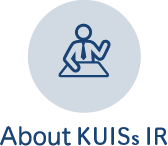How to educate diverse students?
Translation : Hamana Atushi (2018). Meeting the Challenges of Learning Outcomes-based Education. Toshindo: Tokyo. Chapter 4, Section 1
How to educate diverse students?
In advancing university reform, it is of course important for those reforms to be successful. But in implementing reforms the most essential thing is that the reforms address real problems. For example, how can the University address the needs of diverse students? Put in another way, how does a university educate diverse students?
As is well known, "diversity" can mean a variety of things of one type or the inclusion of things of different types. It can denote a variety of different aspects or conditions or states. For Japanese universities, we have entered an era of universalized higher education where many students of diverse backgrounds: the so-called era of "university for all." Just a little while ago, there were young Japanese who did not aspire to university, but recently, even these students have come to matriculate to universities. This has led to a wider variance of academic preparation, academic motivation and academic interest among incoming students. But should the increase in the variety of academic conditions of students lead to pessimism or negativity? I certainly do not think so.
Linking the Learning Styles of High School and University in First Year Education
First year education at my university tries to bridge the gap between the learning styles of high school and university. More specifically, it is a learning program that supports students in their adaptation to the University learning environment. Up until now these students have been immersed in a uni-dimensional education system of 100-point, black vs. white, measurement assessments. However, with such a simplistic assessment approach, there are many competencies that cannot be measured. Perhaps the only people that think that human competency can be simply measured by a 100-point scale are school teachers. They believe that there is only one answer for questions and cumulatively, that is how one assesses ability. However, in real life and work, there are many instances when there is not one right answer. Often times one has to make qualitative evaluations to assess abilities or things.

-
Rubric-based assessment in contrast, allows qualitative evaluation by setting clear standards and goals. By indicating the criteria beforehand, it an approach that allows an evaluation of performance. Through this rubric-based approach, moreover, one can track in a multi-dimensional way diverse student competencies and growth along various personal dimensions. Equally important, students can actively participate in their own evaluation, giving them a more direct sense of ownership in their educational growth.
Here I would like to make a case for the potential importance (along with potential problems) of the First Year Education program within Japanese higher education. To do so, I will draw upon data from a survey of recent matriculees at Social Science and Humanities-based University programs across Japan.
The Issues and Potential of First Year Education in Japan
First Year education programs were initially developed in the United States, often under such titles as "First Year Experience." Initially, these programs were translated in Japanese as "Year One education" or "Matriculee Education", but more recently, "First Year Education" has become the most common translation. Within Japan, there have been some doubts raised as to whether a program born in the United States could ever be fully adjusted to the Japanese context; similarly, others have wondered whether Japan could alternatively use older, once-extant "Japanese-style" "First Year Education" programs as well.
The necessity of First Year education, as mentioned above, comes from the fact that Japanese university students are now much more diverse than in the past. Initially this issue might have been explained as simply a decline in the population of 18 year olds in Japan and the so-called "decline in academic ability" that received widespread social attentionfrom the 1990s. But in fact, this issue of "decline in academic ability" is actually a much broader problem that does not just touch upon pure "academic ability" issues, but rather issues of academic interest, academic habits, a sense of the usefulness of academic learning and broader normative values. With the universalization of higher education among high school graduates, many similar issues have therefore come to the fore within university education.

-
As the American sociologist Martin Trow has once predicted, as university matriculation rates have topped 50%, Japan has evolved into a universal-access stage of higher education. As a result, universities must learn to welcome students with diverse backgrounds as never before. Similarly, older standards of education must also be submitted to new scrutiny, as the very idea of "standards" in higher education lose their common meaning. In such a period of transition, what should one do?
One thing is certain is that one cannot simply rely on past concepts, practices and "no-how" of Japanese higher education. We have entered an entirely new era of university education. There are likely many university educators that are keenly aware of this and feel even a sense of crisis.
In this context, it is worth focusing on First Year Education. In the United States, this concept spread from the 1980s and has been adopted by over 20 countries around the world. If one were to identify some of its main features, it might include:
- Helping students adopt to University Life;
- Helping students acquire the necessary study skills (such as reading, writing, critical thinking, survey-taking, time management);
- Helping students adopt to the specific university;
- Help students better evaluate themselves;
- Help students in developing a life-plan or career plan;
- Help students clarify learning goals and acquire motivation to learn;
- Help students better understand future fields of academic speciality.
The contents of First Year Education programs are therefore diverse and the implementation differs from university to university. With so few common points of overlap (perhaps focused on teaching basic academic skills?) one can even argue that these programs are as much a reflection of the unique needs and ingenuity of each institution.









